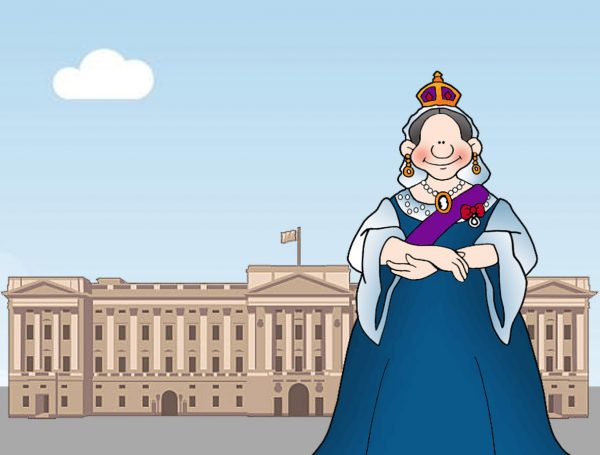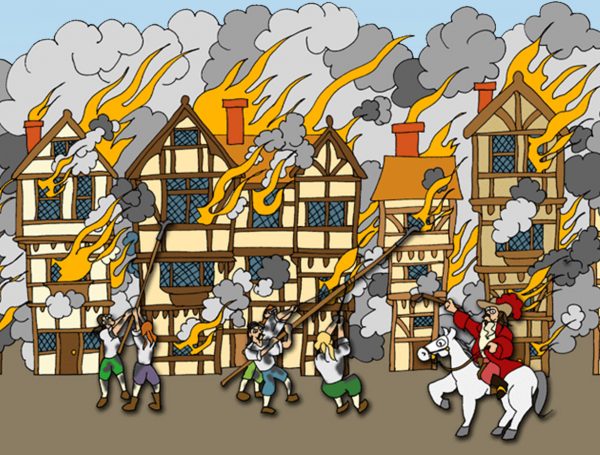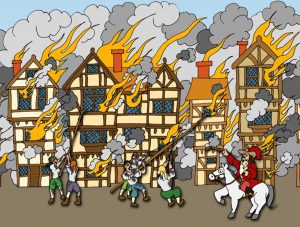🎆 The Gunpowder Plot 🎆
What Was the Gunpowder Plot?
The Gunpowder Plot was a secret plan to blow up the Houses of Parliament in London on 5th November 1605! A group of men, led by Robert Catesby, wanted to get rid of King James I because they did not agree with his religious rules.
One of the plotters was a man called Guy Fawkes, and he is the most famous person linked to the Gunpowder Plot. But why did they do it? And what happened next? Let’s find out!
Why Did the Plotters Want to Blow Up Parliament?
At the time, England was ruled by King James I. He had strict laws against Catholics, and many people were unhappy about it.
A man called Robert Catesby came up with a dangerous plan. He and 12 other men decided to blow up the Houses of Parliament to kill the King and his government. They wanted to put a Catholic ruler on the throne instead!
How Did They Plan to Do It? 💣
🔹 The plotters rented a house next to Parliament and secretly put 36 barrels of gunpowder in a cellar under the building.
🔹 Guy Fawkes was chosen to light the fuse on 5th November 1605, when the King and his government would be inside!
🔹 The explosion would have destroyed Parliament and everyone in it! 😲
But something went wrong…
How Was the Gunpowder Plot Stopped? 🚔
👀 One of the plotters sent a secret letter to a friend in Parliament, warning him to stay away on 5th November.
📜 The letter was shown to the King, and a search was made under Parliament.
💡 At midnight, on 4th November, Guy Fawkes was caught in the cellar with the gunpowder!
🔗 He was arrested and taken to the Tower of London.
The plot had failed!
What Happened to the Plotters? ⚖
Once Guy Fawkes was caught, the King’s men hunted down the other plotters. Some were killed in a fight, while others, including Guy Fawkes, were put on trial and sentenced to death.
The Gunpowder Plot never happened, but it became a huge part of British history.
Why Do We Celebrate Bonfire Night? 🎇🔥
After the plot was stopped, King James declared that 5th November should be remembered every year.
That’s why, every year on 5th November, people in Britain celebrate Bonfire Night with:
🎆 Fireworks – To remind us of the gunpowder that never exploded!
🔥 Bonfires – Some places even burn a Guy Fawkes “dummy” on the fire.
Did You Know? 🤔
✔ Guy Fawkes was not the leader of the plot – Robert Catesby was!
✔ If the gunpowder had exploded, it would have destroyed all of central London!
✔ The cellar where the gunpowder was hidden was later filled in, so no one could try again.
✔ The Yeoman of the Guard still search the Houses of Parliament every year before the State Opening of Parliament, just in case!
What Can You Do? 🎨
🖍 Draw a picture of fireworks in the night sky!
📖 Write a secret letter like the one that warned about the Gunpowder Plot!
🔎 Imagine you’re a detective – how would you stop the plot?
Remember, remember, the 5th of November… 🏛🔥









































